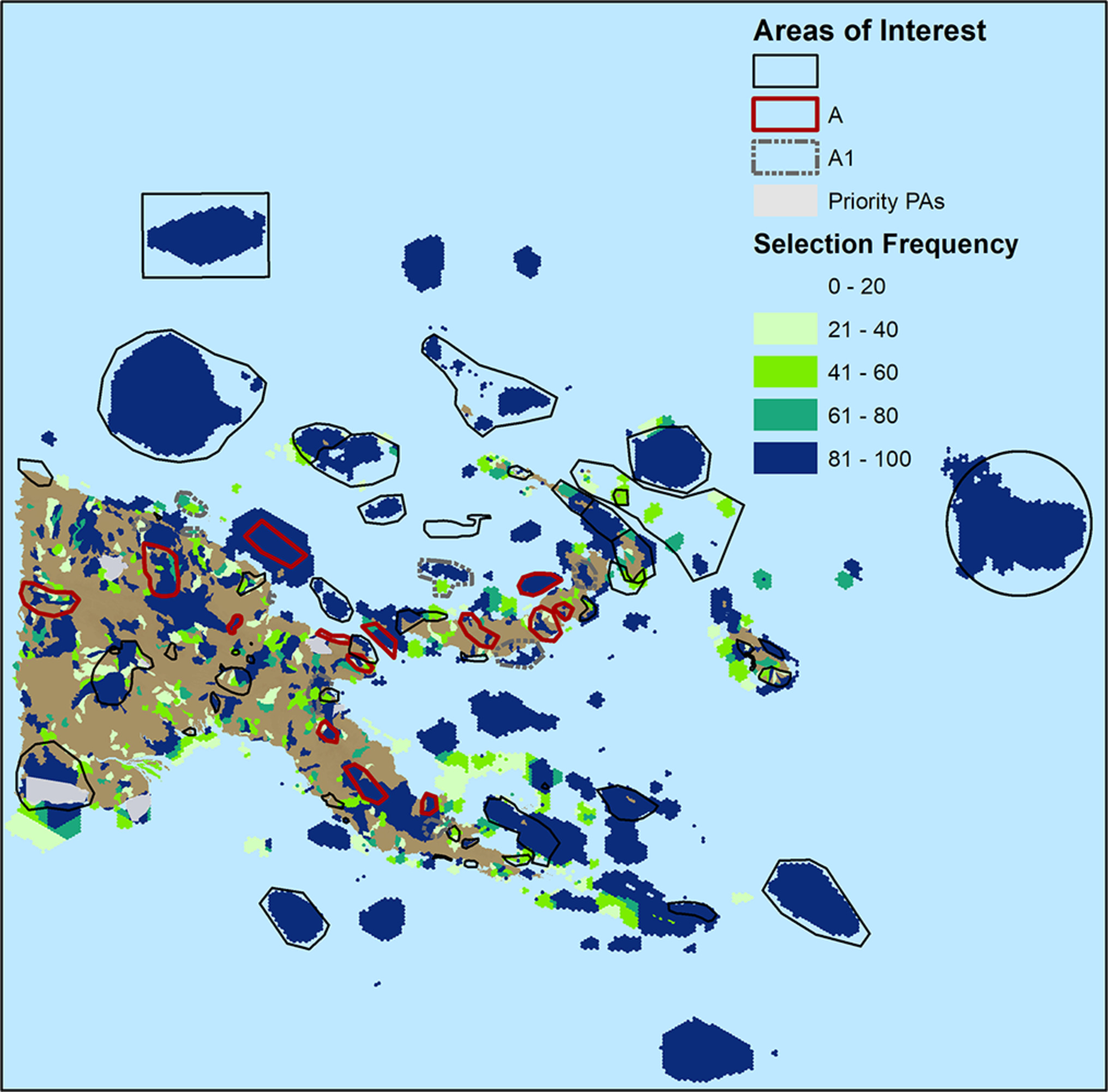Scheduling.
It is rarely possible that priority areas for conservation action identified through systematic conservation planning can realistically be implemented in a single time step. This may be due to socio-economic or financial implementation constraints. Therefore, the value of planning for the incremental scheduling of actions over time to progressively build conservation networks is increasingly recognized. The scheduling functionality in Marxan Cloud facilitates this scheduling of conservation actions over time. Much of the information in this section is summarised from Adams et al. 2020.
Ideally, protection of all areas identified in the conservation plan would be implemented immediately. However, many factors can affect the timing and feasibility of protection such as acquisition or management costs, engaging with local communities, degradation of identified habitat, conflicts of interest (e.g., mining), and political will.
Instead, implementation of areas will occur in a step-wise fashion over a period of time. Approaches to scheduling incremental conservation action generally fall under two approaches: 1) prioritizing areas that are under greatest threat of loss or 2) prioritizing areas where the greatest opportunity to act exists. Funding cycles often influence scheduling of actions. Even with well-planned incremental implementation, there are risks that progress may halt along the way such that conservation objectives are not met. For example, as governments change so do their priorities, which may cause certain policies to be removed or de-funded. Thus, it is critical to know the extent to which different schedules of action may achieve conservation targets if progress is halted at varying stages. Furthermore, scheduling actions will inherently require updated spatial priorities as actions are taken which may deviate from the initial plan and as human dominated and natural landscapes change.
In an example from Papua New Guinea, after spatial priorities (from a Marxan analysis) were finalized and agreed upon through stakeholder consultation, the PNG government was asked to consider how the plan would be implemented. During this workshop, the concept of scheduling actions over time was introduced and how priority areas for scheduling would be identified was discussed. Key principles for scheduling actions related to feasibility—including aspects of financial support, community and stakeholder support, and political support—and threats—primarily from land clearing. Based on these principles, the workshop attendees identified a subset of the conservation priorities that should be targeted first for conservation investment. These areas were identified for immediate action due to aspects such as overlapping with other policies and priorities (e.g., World Heritage Areas), or areas under immediate threat from developments (e.g., mining and palm oil on land and seismic exploration in the sea). A shortlist of areas of interest were then selected for short-term action at the national scale (14 priorities—Schedule A) and provincial scale (10 priorities—Schedule A1).

Conservation priorities identified in the Papua New Guinea National Conservation Priority Assessment. Selection frequency from the Marxan analysis indicates relative importance of planning units for meeting conservation targets. Areas identified for short and medium-term action are identified as areas of interest (general, schedule A and A1)
REFERENCES.
Adams VM, Dimitrova N, Possingham HP, et al. Scheduling incremental actions to build a comprehensive national protected area network for Papua New Guinea. Conservation Science and Practice. 2021;3: e354. https://doi.org/10.1111/csp2.354
